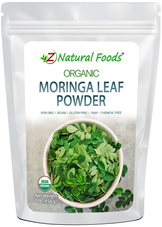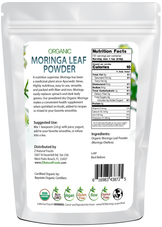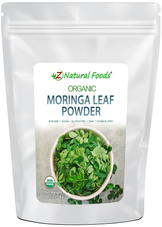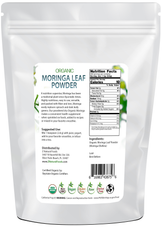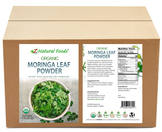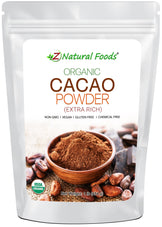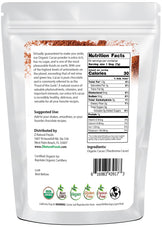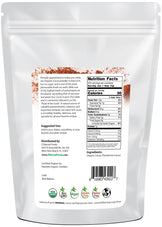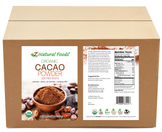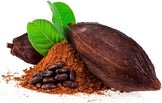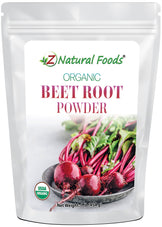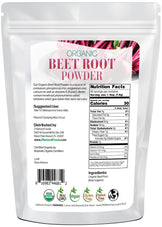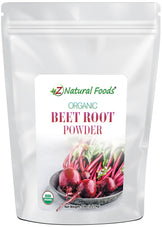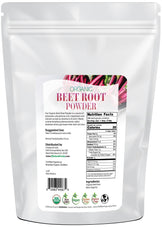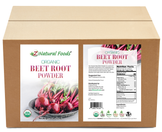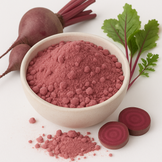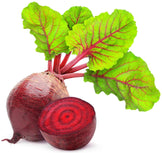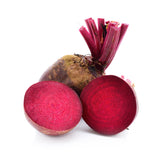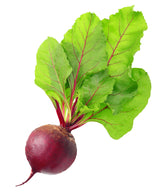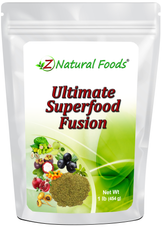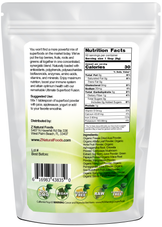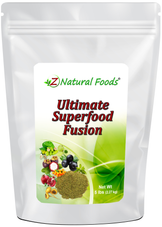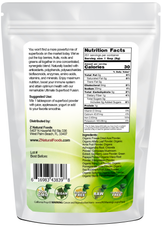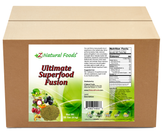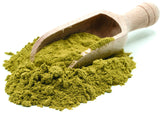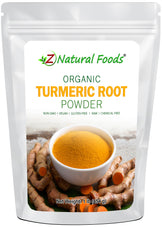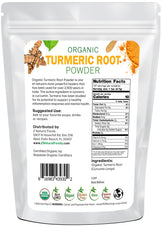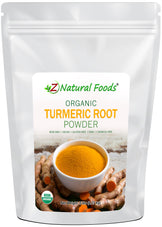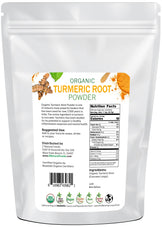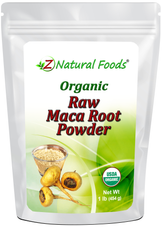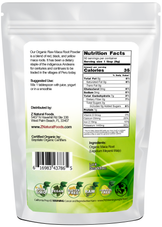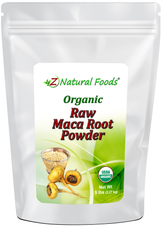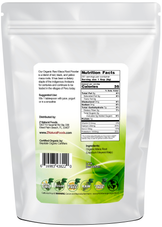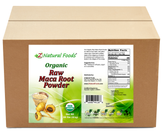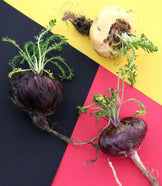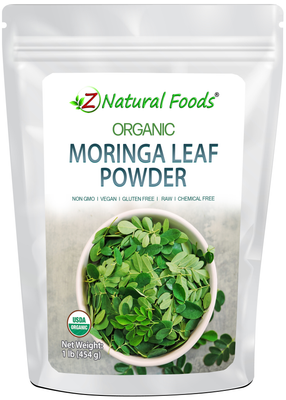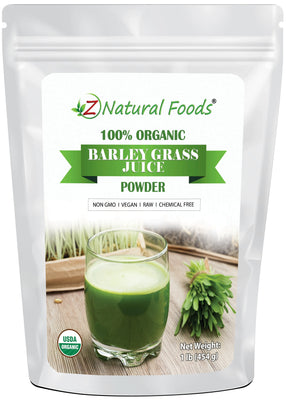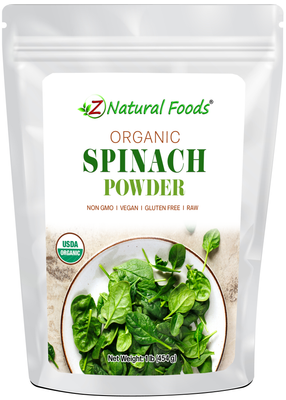Hi everyone, Mike Stuchiner, Master Herbalist here with Z Natural Foods, and today's video is going to discuss one of our products called Green Power Blend. But before we get started, a couple of quick things. First, if you'd like more information about me or want to see any of my other videos, you can always go to my YouTube channel, "A Master Herbalist's Perspective." With that said, let's move on to the medical disclaimer. The video you are about to see is for educational and entertainment purposes only and is not intended to treat, prescribe, or diagnose any specific or general medical conditions. It is not a substitute for your primary healthcare provider's information, diagnosis, or treatment plan. With that said, let's begin.
With our hectic everyday lifestyles, it can put us in a pattern of creating really bad habits like eating fast food or skipping meals altogether. Being on the run doesn't mean you have to sacrifice your well-being. While supplementing nutrients is one way to help fill in the gaps, it's not a long-term solution for bad health habits and poor nourishment. Simply put, you can't out-supplement a bad diet. Vegetables, leaf, and grass powders are a quality source of nourishment, providing critical micronutrients and phyto compounds that may support overall well-being.
Remember growing up and hearing our mothers tell us to eat our greens as we tried to feed them to the dog under the table or hide them under our mashed potatoes? We at Z Natural Foods believe that mothers always know what's best. So we created a delicious and easy way to get all the quality nourishment from your greens. Our mission is to provide customers with great-tasting, highly functional foods with limitless applications in their most versatile form to support a healthy, vibrant life.
What exactly are green foods? Green foods are considered a modern-day creation of a food product from individual or a wide variety of dried or juiced grasses, vegetables, and seaweeds to bring a quality source of concentrated nourishment for supporting healthy human physiology. Green foods have a tremendous reputation for providing a high level of quality nourishment, like micronutrients and phyto compounds, specifically chlorophyll. When prepared and utilized correctly, they can be a great and easy way to add high-quality nourishment to your daily diet.
Are green foods superfoods? To correctly answer this question, it is vital to understand not only the definition and characteristics of what is known as superfoods but also how they compare to a more critical term, like functional foods. Please note that there are no legal definitions for either one of these specific terms. Functional foods are defined as dietary items that provide nutrients and energy that may modulate multiple targeted functions in the body by supporting specific physiological responses. For example, fermented dairy foods are considered functional foods because they offer essential probiotic bacteria for possibly supporting and restoring gut health.
A superfood is a food rich in compounds considered beneficial to a person's health, containing a very high nutritional density with a very low-calorie count. While the definition of these two terms may seem quite familiar or similar or intertwine with each other, their intrinsic details separate them. Therefore, the answer to whether or not green foods are superfoods is no. Green foods are functional foods. Functional foods are the most intensely researched category with the intent to understand better how unique compounds can support well-being by possibly modulating specific mechanisms of action.
Are green food powders the same as green juice powders? While using food in powder form has advantages and disadvantages, it is essential to understand the intrinsic facts that create the differences. Juice powders are one of many versions of what is known as extract powders. The umbrella term "extract powders" describes many different versions of plant, fungi, and animal foods in either powdered or liquid form. These different versions create variables for nourishing qualities. Some of these variables are defined by the level of concentration they have, one-to-one, ten-to-one, 21-to-one, and so on. A full spectrum extract concentrates a food or herb as a whole, so you get all the constituents found in that food at much higher levels than what you would find in its normal state. Although the fiber has been removed in juice powders, all other nutrients and constituents are perfectly balanced; they're just more concentrated. The ingredients in Green Power Blend are dried and milled into a powder and left in their original natural form. This product is a whole food powder with all constituents intact; the water has simply been removed, and nothing has been purposely concentrated.
You can count on the fact that there will be differences in color and taste between juice powders and whole-food powders. The whole food powder is more likely to vary from batch to batch. To be clear, this is not to say that one is necessarily better than the other; it's more a matter of how you intend to use the product that will declare which one is more suitable for your individual needs.
The treasure trove of nourishment: chlorophyll. Chlorophyll is a compound in plants that gives them a deep, vibrant green color. This is the primary compound that helps in a process called photosynthesis, which is using sunlight to synthesize food from carbon dioxide and water. Simply put, the deeper the green the vegetable, the more chlorophyll it contains. The two primary types of chlorophyll found in plants are chlorophyll A and B, both of which are fat-soluble compounds with highly nourishing and protective properties. When chlorophyll is ingested, it moves throughout the body via molecular groups called bacillus, whose purpose is to help the body absorb lipids and fat-soluble nutrients. They also help transport fat-soluble nutrients to the small intestines. Chlorophyllin is a compound produced from chlorophyll through a process called saponification. This process takes chlorophyll paste and sodium hydroxide to create this reaction, breaking the ester bonds between fatty acids and glycerol, resulting in what is known as free fatty acids. By then adding copper to crystallize, purify, and make sodium formation, you end up with what is known as a sodium copper chlorophyllin end product. In simple terms, chlorophyllin is the water-soluble version of chlorophyll.
In earlier human studies, it was shown that by taking 100 milligrams of chlorophyllin daily, there was a 55% decrease in DNA damage in individuals with pre-existing liver issues.
Vitamin K: Unless you've been living under a rock for the past 10 years, it will come as no surprise the vital importance of vitamin K on human health. Before we get down into the nitty-gritty and the nourishing qualities of vitamin K, let's break this down so we understand all the vital details.
The general term "vitamin K" describes the family of vitamin Ks, vitamins K1, K2, and K3. The family of fat-soluble vitamins is implicated in many essential biological processes like blood clotting, bone formation, and possibly reducing calcium deposits in the arteries. Technically, there are three forms of vitamin K, but what we know as K3 has been banned by the FDA due to its potentially toxic effects. It seems that the nourishing qualities are found in vitamins K1 and K2. K1 is primarily found in leafy green vegetables, and K2 is mainly in fermented foods, milk, meat, eggs, and cheese, and has multiple subtypes: MK4, MK6, MK7, and MK9. MK4 is primarily found in animal fats like egg yolks, lard, and butter. MK7 is a product of cheese and fermented foods but is mainly found in what is known as natto, a fermented soybean product. Ultimately, in the end, K1 and K2 have the same functions and work via the same exact mechanism of action, except K2 works more efficiently.
In a randomized control study discussing vitamin K and its association with mortality risk, it was stated that those who increased their intake of K1 and K2 had a lower chance of all-cause mortality compared to individuals who decreased or didn't change their intake at all.
Carotenoids: Phytonutrients are compounds plants produce to help them resist external environmental threats. These compounds are believed to have nourishing qualities that may support a wide range of human health factors. Carotenoids are a class of red, yellow, and orange fat-soluble pigments produced by plants, algae, and photosynthetic bacteria. There are more than 600 types of carotenoids, and some of the most common are alpha and beta-carotene, lutein, and lycopene, all of which have unique attributes that are researched for their ability to have antioxidant-like qualities potentially. Carotenoids are classified into two primary groups:
Xanthophylls primarily protect from too much sunlight, contain oxygen, and have more yellow pigment. They are associated with nourishing the eyes and are closely associated with green leafy vegetables.
Carotenoids: These have no oxygen and are associated with orange pigments.
An article published in 2001 discussed the importance of leafy green vegetables, specifically spinach, and kale, and assessed that, based on supporting healthy biological function, the most essential phytonutrients in green leafy vegetables like spinach and kale are the carotenoids lutein, beta-carotene, and zeaxanthin.
Green foods: A traditional Chinese medical perspective. One of the concepts in TCM is the five elements theory that outlines the relationship between the different elements of nature: wood, fire, earth, metal, and water, and the life force, aka Qi, that flows through them. Different colors and seasons are also part of this equation. The heart is associated with the color red and the season of summer. The spleen and stomach are associated with the color yellow, and the lungs are associated with the color white and fall. Finally, the kidneys are associated with the color black and winter.
Regarding green foods and the color green, traditional Chinese medicine believes that this represents springtime, when all the plant life begins to flourish, and is related to the element of wood. The wood element resonates with the liver, the grand architect of our vision of the future and strategic planning, the gallbladder, the center of our ability to decide and judge wisely, and tendons, nails, and ligaments. The flavor is sour, and the emotion of anger. TCM believes that the liver's primary functions are to store blood and regulate Qi's movement, the body's life force. It is partnered with the gallbladder. Therefore, focusing on nourishing the liver and gallbladder with foods that support the detoxification pathways, like greens, may provide significant benefits.
Z Natural Foods hand-picked specific individual ingredients for our customers based on three concepts: to provide the best quality product possible for supporting optimal well-being, versatility, history of safe and effective usage, and strong evidence of positive research outcomes in human beings.
So, gang, that's it for today's video. We discussed what I would consider to be the real quality information about Green Power Blend. Check it out at znaturalfoods.com. This is Mike Stuccino, Master Herbalist. I'll see you next time.

















